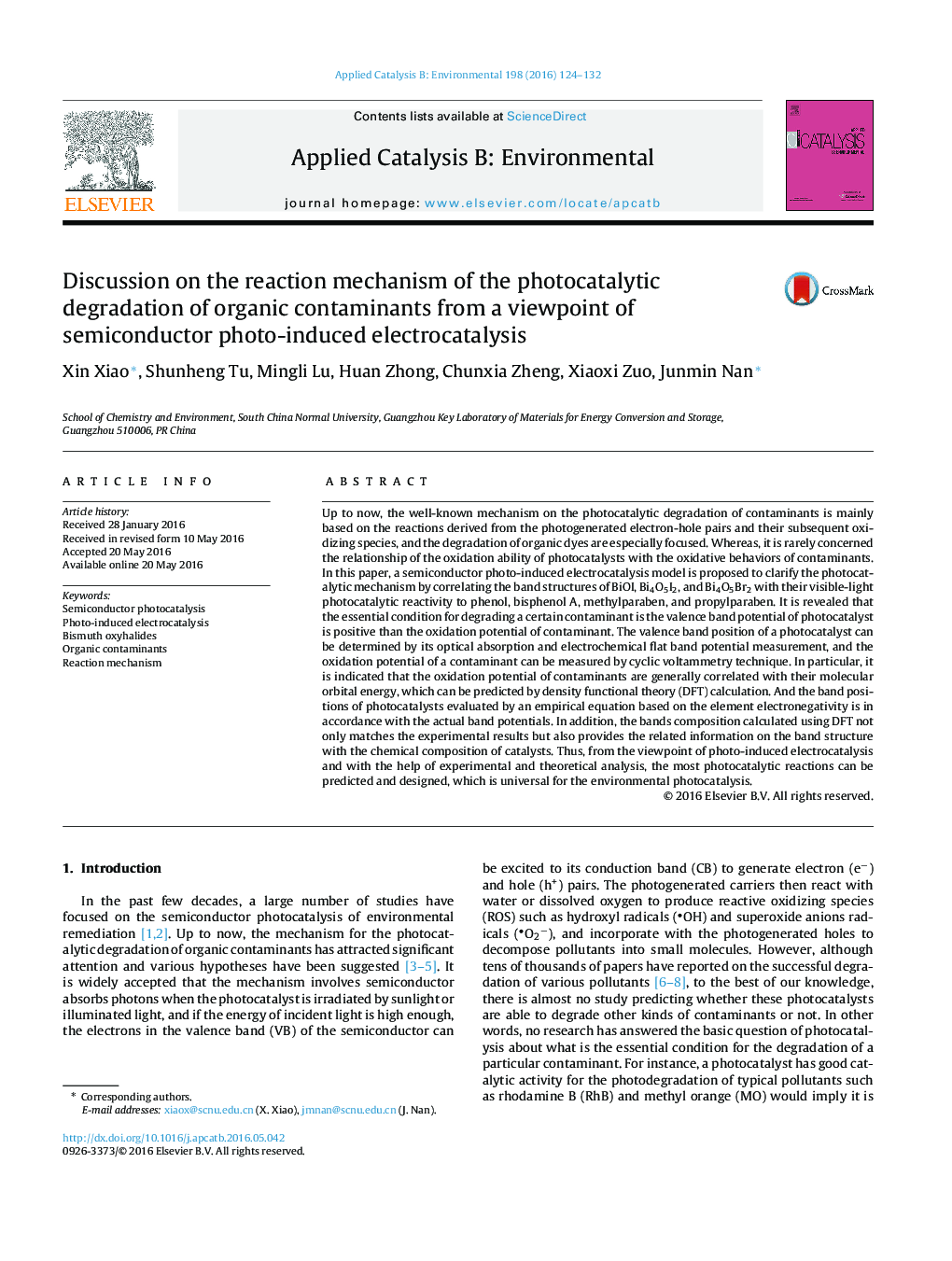| کد مقاله | کد نشریه | سال انتشار | مقاله انگلیسی | نسخه تمام متن |
|---|---|---|---|---|
| 44722 | 46344 | 2016 | 9 صفحه PDF | دانلود رایگان |
• The link between the electrochemical behaviors of pollutants with band positions and activity of photocatalysts are correlated.
• The mechanism of photocatalytic reaction is expatiated from a viewpoint of photo-induced electrocatalysis.
• A semiconductor photo-induced electrocatalysis model for the photodegradation of organic pollutants is established.
• By using the energy (or potential) viewpoint, the photocatalysis reactions can be easily predicted, designed, and selected.
Up to now, the well-known mechanism on the photocatalytic degradation of contaminants is mainly based on the reactions derived from the photogenerated electron-hole pairs and their subsequent oxidizing species, and the degradation of organic dyes are especially focused. Whereas, it is rarely concerned the relationship of the oxidation ability of photocatalysts with the oxidative behaviors of contaminants. In this paper, a semiconductor photo-induced electrocatalysis model is proposed to clarify the photocatalytic mechanism by correlating the band structures of BiOI, Bi4O5I2, and Bi4O5Br2 with their visible-light photocatalytic reactivity to phenol, bisphenol A, methylparaben, and propylparaben. It is revealed that the essential condition for degrading a certain contaminant is the valence band potential of photocatalyst is positive than the oxidation potential of contaminant. The valence band position of a photocatalyst can be determined by its optical absorption and electrochemical flat band potential measurement, and the oxidation potential of a contaminant can be measured by cyclic voltammetry technique. In particular, it is indicated that the oxidation potential of contaminants are generally correlated with their molecular orbital energy, which can be predicted by density functional theory (DFT) calculation. And the band positions of photocatalysts evaluated by an empirical equation based on the element electronegativity is in accordance with the actual band potentials. In addition, the bands composition calculated using DFT not only matches the experimental results but also provides the related information on the band structure with the chemical composition of catalysts. Thus, from the viewpoint of photo-induced electrocatalysis and with the help of experimental and theoretical analysis, the most photocatalytic reactions can be predicted and designed, which is universal for the environmental photocatalysis.
Figure optionsDownload as PowerPoint slide
Journal: Applied Catalysis B: Environmental - Volume 198, 5 December 2016, Pages 124–132
